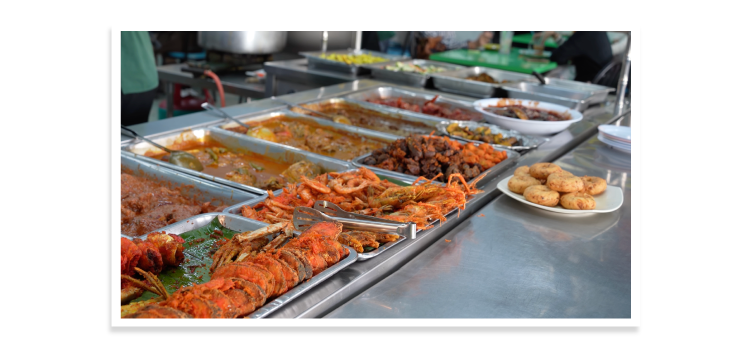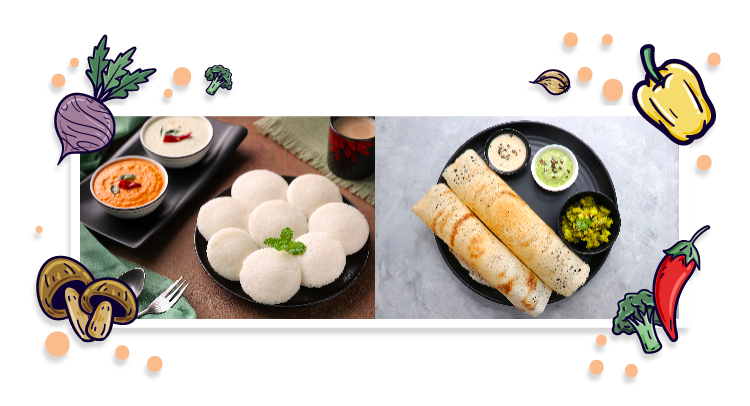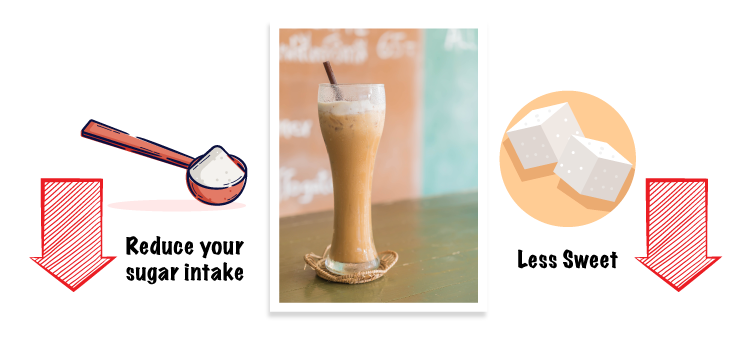

In the final instalment of our 3-part series on a healthier Malaysian diet, we continue our journey from the last two articles where we explored ways to make Malay and Chinese cuisines healthier. In this article, we turn our attention to the rich and diverse flavours of Indian cuisine in Malaysia and discover how we can savour it while keeping our health and well-being in mind.
South Asian flavours in Malaysia: A Special Blend
Indian cuisine is a tasty mix of aromatic spices, different vegetables and a wide variety of protein sources. It frequently incorporates spices such as cumin, coriander and turmeric, which give Indian dishes their unique and strong flavour. These unique Indian spices are often used in different ways to create flavourful curries, dals, biryanis, banana leaf rice and nasi kandar that are part and parcel of the typical Indian diet in Malaysia.

Let’s also not forget about the much loved mamak stall culture, where we’ll often find Malaysians of every race and status in life gather. However, even though Indian dishes are nothing short of lip smacking, we need to be a little careful as some aspects of Indian cooking, such as the use of lots of oil, ghee and rich gravies, may not be good for our health if we consume too much of it. Let's explore these aspects further in the following sections.
Enjoying Healthier Indian Food
To make our Indian meals healthier, consider these practical tips. Enjoying the rich flavours of nasi biryani, banana leaf rice and nasi kandar can be a delicious experience, and with a few mindful choices, we can make it healthier too. When enjoying these meals, it’s best to follow the Malaysia Healthy Eating Plate guidelines: fill half of your plate with vegetables, such as a generous portion of raita for a refreshing touch and high nutritional value.
Consider options like boiled okra, green chillies and cabbage fried with turmeric for additional vegetable goodness. A quarter of the plate should be reserved for healthier protein sources such as tandoori chicken, curry fish or eggs, while limiting the use of rich gravies. The latter is easier said than done, we understand. Try this instead; rather than banjir (flood) the rice with gravy (which some of us are guilty of doing), request for the gravy to be served in a small bowl.
When it comes to items like fried bitter gourd and papadam, keep the portions small to cut down on unhealthy fats and salt, making it easier on the heart and waistline. Complete the remaining quarter of the plate with a small bowl of rice. With these simple adjustments, we can enjoy the iconic flavours of these dishes while prioritising our health.

Within the vibrant Malaysian mamak stall culture, where the true Malaysian spirit is celebrated, we can still make mindful choices for a healthier eating experience. When choosing traditional breads such as roti, opt for chapati, which is made from wholemeal atta flour and contains more nutrients and fibre. Healthier alternatives such as thosai or idli, which are made from a mixture of fermented rice and dal and contain gut-friendly bacteria, are also worth a try.
When indulging in these breads, pair them with curries and gravies that use less oil and opt for protein-rich choices like dal, boiled eggs or tandoori chicken. Don't hesitate to ask for extra servings of vegetables to create a well-rounded meal, such as onions and cucumbers which are often served with tandoori chicken, or stir-fried vegetables commonly found in mamak stalls.

When it comes to drinks, while teh tarik is a popular choice, consider ordering the kurang manis (less sweet) version to reduce your sugar intake. Alternatively, you could also order kopi o or teh o kosong for sugar-free options. Needless to say, there are many always ways to explore the diverse offerings of mamak stalls and fully embrace the culture while making health-conscious choices.
In Summary
To conclude our series on healthier Malaysian food, we have explored the flavourful worlds of Malay, Chinese and Indian cuisines. By following these simple tips when selecting the various cooking methods and what we eat, we can enjoy amazing Malaysian flavours while keeping our health in mind for a long time to come. Ready to make a change? Check out this recipe for vegetable dhal curry.
As we say goodbye to this series, we recommend you check out the previous two articles for tips on making Malay and Chinese food healthier. Let's work together for a healthier Malaysian diet where our different cultural flavours go hand in hand with our health and well-being.
Reference
This article is contributed by
Georgen Thye, Consultant Dietitian
BSc. (Hons.) Nutrition and Dietetics, IMU
Council Member of the Malaysian Dietitians' Association (2021-2023)
